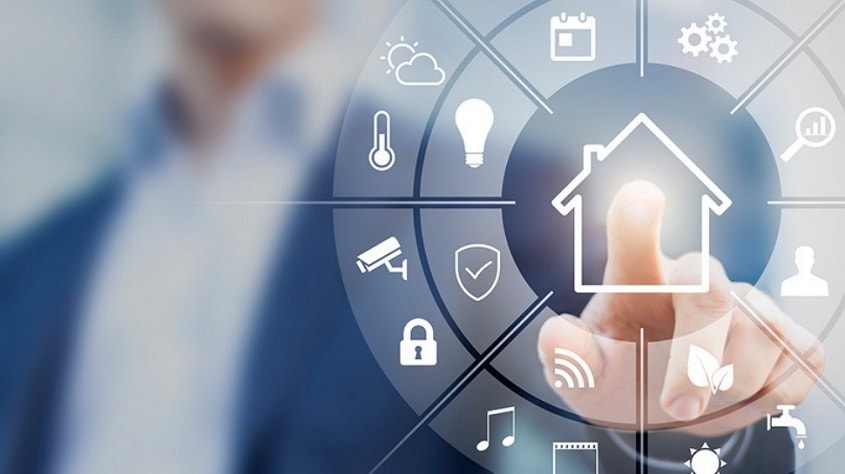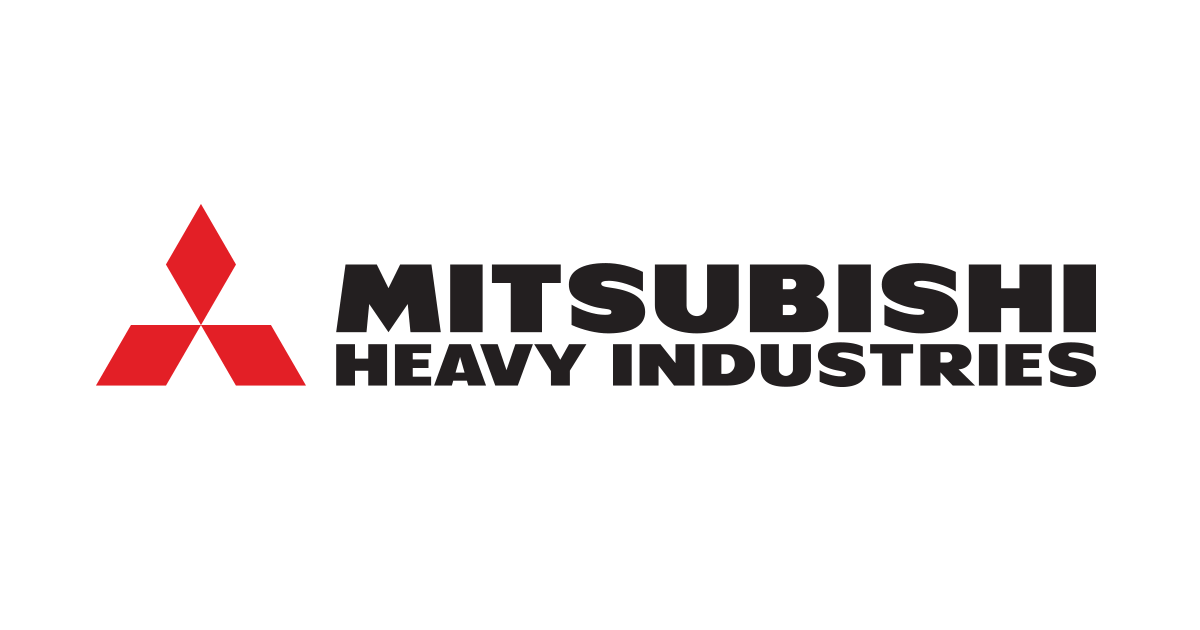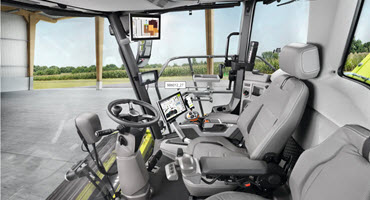Matter For Smart Homes : Current Devices & Future Potential
Two years after its launch, Matter, the smart home standard developed by Apple, Google, Amazon, and Samsung, is finally gaining traction. Matter is designed to create a common language for smart home devices, making it easier to buy, set up, and use connected gadgets. With Matter, compatibility concerns between different brands and platforms should be […] The post Matter For Smart Homes : Current Devices & Future Potential appeared first on World Construction Today.

Two years after its launch, Matter, the smart home standard developed by Apple, Google, Amazon, and Samsung, is finally gaining traction. Matter is designed to create a common language for smart home devices, making it easier to buy, set up, and use connected gadgets. With Matter, compatibility concerns between different brands and platforms should be a thing of the past. If a device supports Matter, it should work seamlessly across any Matter-enabled platform or device.
In this article, you’ll find a list of Matter-compatible products available now, along with details on how they integrate into your smart home. We also cover the platforms that support Matter and what you need to get started. This guide will be updated as new information becomes available.
What is Matter?
Matter is a new standard backed by major smart home industry players like Amazon, Apple, Google, and Samsung, along with hundreds of other companies. It’s an open connectivity protocol that allows devices to communicate more easily, securely, and reliably. The goal is to simplify the smart home experience by ensuring that devices built to this standard work across all ecosystems.
If a gadget supports Matter, it can be used with any Matter-compatible platform, whether it’s Amazon Alexa, Apple Home, or Google Home. Devices can also connect to multiple platforms at once, allowing control from different devices or voice assistants, whether you’re using iOS or Android.
Matter operates locally over Ethernet and two wireless protocols: Wi-Fi and Thread. This ensures fast, reliable connections without needing the cloud. Security is built into the Matter standard, giving users more confidence when purchasing connected devices.
For more details on how Matter interacts with various platforms and what you need to get started, check out my in-depth explainer, “What Matters about Matter.”
The Current State of Matter
As of August 2024, Matter has made significant progress but still has limitations. The latest release (1.3) added support for most device types commonly used in smart homes, though some important categories like cameras and home security systems are still unsupported. Energy management has been introduced as a key feature, offering a promising avenue for reducing energy consumption and saving money.
However, the rollout has been slow, with only a few manufacturers adopting Matter so far. Even major platforms support only some of the Matter device types, and the implementation of features remains incomplete. For instance, some devices lack basic functionality, such as setting a PIN for door locks or dynamic lighting scenes for smart lights. Issues with Thread border routers and inconsistent Multi-Admin feature support also hinder the seamless experience Matter promises.
While Matter is not yet ready to be the primary connection standard for all smart home devices, it’s a step in the right direction. If you’re keen to explore its benefits—like local control, enhanced security, and cross-platform compatibility—this article provides everything you need to know about what currently works with Matter.
Device Types Supported by Matter
As of August 2024, the Matter specification supports several device types, divided into implemented and announced categories.
Implemented:
These devices are already supported by some or all Matter-compatible platforms:
– Air purifiers
– Air quality sensors
– Blinds and shades
– Bridges (for other protocols like Zigbee)
– Door locks
– Fans
– Light bulbs and switches (including smart buttons)
– Plugs and outlets
– Robot vacuums
– Room air conditioners
– Safety and security sensors
– Televisions and media devices
– Thermostats and HVAC controllers
Announced:
These device types are part of the Matter specification but are not yet supported by platforms or available for purchase:
– Refrigerators / Freezers
– Washing machines
– Water management devices (leak detectors, frost sensors, controllable valves)
– Smoke and CO alarms
– Microwave ovens
– Dryers
– Dishwashers
– Electric Vehicle Supply Equipment
Matter supports the basic functions of these device types, providing a consistent user experience across platforms like Apple Home and Amazon Alexa. However, for advanced features, such as setting dynamic lighting scenes, you may still need to use the manufacturer’s app.
Smart Home Devices That Work with Matter
Matter-compatible products are identifiable by the Matter logo on their packaging and a QR code on the device. Some existing devices have received Matter support through over-the-air firmware updates or can be integrated into Matter through proprietary hubs or bridges, such as Philips Hue lights.
To use Matter devices, you’ll need a Matter controller and a platform that supports Matter. Details on controllers and compatible platforms are provided at the end of this article.
Now, let’s dive into the devices that currently support Matter:
Smart Door Locks:
All major platforms support smart door locks through Matter, but only a few locks currently work with the standard. This limitation is because most smart locks rely on Wi-Fi, and Matter doesn’t yet fully support battery-powered Wi-Fi devices.
Smart Thermostats and HVAC Equipment:
Currently, only the Nest Thermostat (2020) is available with Matter support. However, the Nest Learning Thermostat (4th gen) will also support Matter starting August 20th.
Air Purifiers:
As of August, air purifiers are only supported by Samsung SmartThings. While Apple Home, Google Home, and Alexa support air purifiers on their platforms, Matter support is not yet available.
Robot Vacuums:
Matter supports basic functions for robot vacuums, such as starting remotely and switching cleaning modes. However, advanced features like room mapping still require the manufacturer’s app.
Home Appliances:
Fridges, dishwashers, washers, dryers, and ovens are supported by Matter but are not yet available for purchase with Matter compatibility.
Televisions & Media Devices:
Matter-enabled TVs can be controlled through your smart home app, including volume control, input changes, and power settings.
Smart Shades, Blinds, and Shutters:
Matter supports basic controls like raising, lowering, and tilting blinds, making it a straightforward choice for integrating smart window treatments.
Smart Lighting:
A wide range of smart lighting options are available under Matter, including bulbs, switches, and plugs. These devices can connect directly to your platform without needing third-party apps, offering faster and more reliable control.
Bridges in Matter:
Devices using proprietary bridges, such as Philips Hue bulbs or Aqara sensors, can be integrated into Matter. However, some advanced features may be lost when connecting these devices through Matter instead of their native platforms.
In summary, while Matter is still in its early stages, it offers a promising path toward a more unified and secure smart home experience. If you’re looking to future-proof your home, exploring Matter-compatible devices is a worthwhile investment.
The post Matter For Smart Homes : Current Devices & Future Potential appeared first on World Construction Today.

 machineryasia
machineryasia 







